 Port Credit Marine Surveys & Yacht Delivery Society of Accredited Marine Surveyors 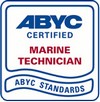 American Boat & Yacht Council 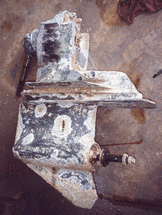 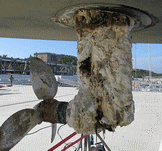 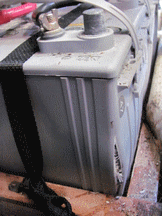 

|
BUYING AN OLDER BOAT I really wanted to call this "Buying an Old Boat" but "Older" seemed less harsh. Each year I find I am surveying older and older boats ( the surveyor isn't getting any younger either ) and its fairly common for me to survey 35 year old sailboats, 35 year old power boats are less common, I wonder where they all went ? If you are buying a $20k boat you should realize you will very quickly put another $20k into it. You will save about $20k's worth of aggravation and wasted time if you bite the bullet and put the $40k out up front and buy a better boat. None of these older boats meet current standards and contrary to popular belief, Transport Canada does not allow for grandfathering of these standards deficiencies. Transport Canada Small Vessel Construction Standard TP1332E states……. "Existing pleasure craft shall comply with this standard insofar as it is reasonable and practicable to do so". This admittedly provides some wiggle room but its not something I'd want to rely on in front of a judge arguing against my insurance company. Deals may be aborted after my marine survey report is issued as the prospective buyer is demoralized by the inevitable long list of deficiencies. This list is often enough to scuttle the deal but lets put things in perspective. |
|
|
Most of these "entry level" boats
are in the 27 - 32' size and the systems
aboard are quite simple and repairs or updates
to equipment need not be outrageously expensive,
if one is realistic about what needs to be
done as opposed to what one wants to do.
Check out the common issues listed below
and make up your own mind. Wet or rotten balsa core The single most common issue of older sailboats and many power boats. On a 20 year old boat the deck core is almost certainly wet if not rotten. Repairing this type of damage may cost almost as much as the boat itself so forget about fixing it as you are not going to get your money back at resale time. Yes the deck may be a little moist and the gelcoat cracks are unsightly but you will not fall through the deck and it won't sink the boat. I wouldn't recommend a boat with rotten decks go bluewater sailing but be honest most of you are just doing weekend fairweather stuff. You don't need to buy a moisture meter or hire a surveyor to determine if the core is wet, just lightly tap with a small brass hammer or a $2.00 coin you will quickly learn the difference between the clear sound report of dry core, the clack of core separation or the dull thud of the soft wet core variety. If the deck core is a bit wet but all else is OK and you like the boat .... lower your offer accordingly and go ahead. Remember, when you sell that boat the next buyer will also lower his offer when he hears that dull report. If you want a fracture free, dry deck core, go to the boat show and add another $200k to that $20k you had budgeted for a 28 footer or buy the 20k boat and go sailing. Please remember I am talking about decks, Balsa bottoms are a totally different issue and if there are more than a couple of localized areas, walk away. Suggested reading ... Balsa Core =Compost |
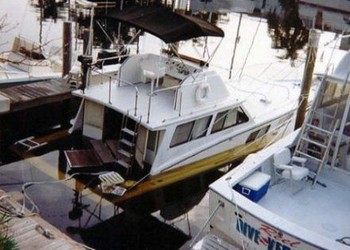 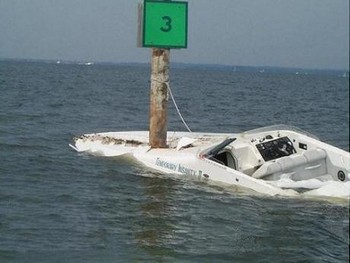
|
|
|
AC shorepower built with domestic equipment Many of these boats have domestic style breaker or fuse boxes and solid core copper conductors ( not good) as opposed to stranded copper, few are grounded properly and fewer are fitted with G.F.C.I.s . A marine panel, a couple of G.F.C.I. outlets and some stranded copper conductors can be had for about $600.00 and is not a complicated installation. Just remember that AC on a boat is not quite the same as AC in a home and the average "electrician" may not be aware of the differences.... consult a qualified marine electrician (scarcer than hen's teeth) or give me a call for some help. Corroded electrical AC & DC systems You really can't expect the connectors or conductors on navigation lights, ignition switches, electrical and electronic switches to live in a marine environment for 30 years and maintain their conductivity. You may need some DC conductors and a lot of little ring terminals, butt connectors, breakers and all the other little electrical accessories that make up a reliable electrical system. Dangerous engine compartment ventilation This applies to all gasoline powerboats and sailboats with Atomic 4 engines. This one is serious, dangerous and extremely easy to fix for usually less than a $100.00. I still don't understand why more of these boats do not blow up. Consider this….. Out of about 240 surveys a year, (about 120 gasoline powered) I see only one or two properly vented engine compartments in gasoline powered boats. It is extremely common to find sailboats with inboard gasoline engines and non-ignition protected AC equipment in the same compartment as engine and gas tank then an engine compartment blower exhausting into the cockpit. This is patently insane ! Improperly installed batteries I won't go into the details here, rely on your surveyor for that or take a look at "Stoopid Tricks By Boat Owners but properly installed batteries are rare, I estimate 80% of the older boats I survey have improperly, often dangerously installed batteries. These deficiencies can usually be corrected for about $40.00 and a little sweat. Unsafe batteries and improper installation Same as above… a few bucks and a couple of hours work can usually fix these. Corroded fuel tanks Many older boats have fuel tanks that were improperly installed at the factory and more than a few have corroded where you can't see it… on the bottom. If you have this situation it may cost from $300 to $800 to fix or replace the tank but make sure its not going to cost $5k to get it out. Wet transom core on i/o boats This becomes a question of degree. As none (that I have ever seen) of these i/o boats were built properly in the first place they will all take on water sooner or later, usually within a few years. if the moisture is elevated but the transom still checks sound you may have several years before a rebuild. If moisture is high and you get very dull thumps or the "clack" of core separation when you tap it with your hammer then expect a $5 - 10k rebuild in the very near future. 30 year old fuel lines Don't even look, if they have not been changed in 30 years its just plain good sense to do it now….from $100 to a couple of hundred bucks. Corroded keel bolts You may be able to live with a little surface corrosion but heavily corroded keel bolts are a much more serious and potentially costly issue…pay the surveyor and move on or better yet, take a critical look before you hire a surveyor. Corroded chainplates Unfortunately many sailboats are built with the plates inaccessible for inspection. Make them accessible and if you see any corrosion replace them. The expense makes this a potential deal killer. Saturated or split sailboat rudders Most sailboat rudders are of foam filled construction and there are only two categories in older sailboats...those that have been repaired and those that need repair. Over time this foam gets water saturated and the freeze thaw cycle or hydraulic erosion will separate the foam from the glass skin. The foam begins to disintegrate and then you have a $2,000 rebuild. If the foam is saturated but skin separation is minor you may get away with drilling a hole in the lowest edge of the rudder to permit water to drain before freeze damage occurs over the winter lay-up season. This is such a common condition that many of the older boats have already had their rudders rebuilt. Aluminum holding tanks (not good) Aluminum waste tanks used to be standard issue and these are rare on newer boats with good reason. Aluminum and uric acid simply don't go together. A leaking waste tank can spoil your weekend cruise quite effectively. A new polyethylene tank can be had for $300 - $400.00. Installation may be $40.00 or $4000.00. A common mistake of new boaters is to buy a $30k boat, put another $30k into it and then be shocked when they find out its now worth $32k. Think of it this way if you buy a 1988 Chevy and spend $20k on it….what do you have ? A really nice 1988 Chevy ! You might also want to read " "Whats She Worth". You do not have to hire a surveyor for every boat you are interested in. Take a look though my sample survey reports (links on my home page) and use them as a self-survey guide to separate the wheat from the chafe and save yourself from hiring me more than once. Wet decks on that old CS27 won't hurt you so get it for the right price, fix the safety issues, don't blow the budget on fancy geegaws and go sailing. If you read nothing else on this website do yourself a favour and read Marine Survey 101 before you buy a used boat. PS. The 30 year old cruising boat that has spent 16 years in the Caribbean and is cruise equipped with inverter, wind generator, solar panels, charge controllers, nine batteries and the associated switching and monitoring equipment is a boat for someone who knows exactly what they are buying. New boaters should stay away from these bargains. |
||